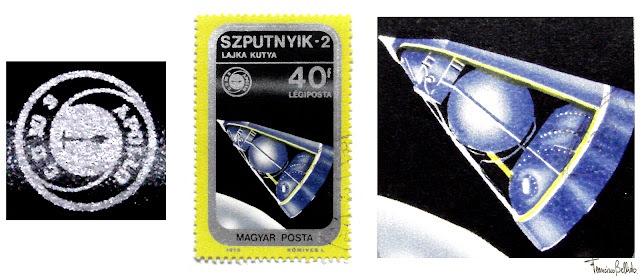November is a landmark month in satellite history, marked indelibly by a mission that not only expanded our technical horizons but also forced us to confront difficult ethical questions that still resonate today.
As part of a new monthly series, “Payloads of the Past", I take a look back at a pivotal, yet often controversial, moment in the story of satellites and space.
Remembering Sputnik II: Breaking New Ground

On November 3, 1957, the Soviet Union’s Sputnik II became the first spacecraft to carry a living passenger into Earth orbit. That passenger was Laika, a stray dog from Moscow who, to this day, symbolises both the bold promise and the moral complexities of early space exploration. Laika’s journey, just one month after the world-awakening launch of Sputnik I proved rapid progress was possible in the space race, as engineers and scientists raced to demonstrate new capabilities and understand the true challenges of spaceflight.
The mission involved remarkable innovation: Sputnik II weighed 508 kg (over six times the mass of its predecessor Sputnik I), featured life-support systems, and measured the biological response of a living organism to life in orbit. Yet, its outcome was sobering; Laika survived only a few hours in orbit, succumbing to overheating, and her sacrifice stirred public debate worldwide.
Lessons Written in the Stars

The launch of Sputnik II advanced both satellite and bio-sciences, helping pave the way for subsequent missions, including those that carried humans safely into space.
The data from Laika’s flight directly informed the design of later Soviet (and Western) spacecraft, making her role foundational in the evolution of today’s crewed missions.
But technical achievement came at the price of ethical dilemmas.
Laika’s story triggered outcry from animal welfare advocates and even some scientists, prompting reflection on what lines should, or shouldn’t, be crossed in pursuit of scientific progress.
Why Does This Matter Today?
These dilemmas remain poignant. As the pace of satellite deployment skyrockets, and as we consider broader questions about the impact of mega-constellations, orbital debris, and even the automation of satellite management, it’s timely to ask Are we learning from history?
Has our capacity for rapid technical progress outpaced our ability, or willingness, to uphold higher standards of ethical responsibility?
Call to the Community: Learning From Our Past
Blog post are made to encourage debate, share thought and leave an open forum for professional discussion. This should never be constrained by the Author, and the community should guide the rocket. But, to offer some initial questions:
What enduring lessons did the space community genuinely learn from the Sputnik II mission, and what more could have been done?
Are there modern equivalents, such as satellite tests with environmental consequences, where we still move faster than we debate?
Has ethical responsibility kept pace with innovation, or do we still make similar trade-offs in today's commercial and sovereign satellite missions?
What should be the true legacy of Laika?
And, as stewards of the next era in satellite history, how can today’s engineers and operators ensure we advance not just in technical prowess, but also in our ethical maturity?
Join the discussion below. How should the satellite community respond to the next “Sputnik II moment”?
Your insights will shape how we remember, and hopefully, how we move forward.
Staring into Space: Next Month
December marks the anniversary of Gemini 7’s groundbreaking 1965 mission, featuring the first-ever orbital rendezvous that paved the way for advanced satellite docking and space station operations.
This event occurred in 1965 when Gemini 7 rendezvoused with Gemini 6, marking a fitting historic milestone .
I/We will explore how this pioneering docking mission influenced modern satellite servicing, orbital assembly, and cooperative space missions, and look to reflect on how far satellite operations have evolved since that landmark.
#PayloadsOfThePast
__________________________
Payloads of the Past is a monthly blog series designed to spotlight landmark satellite or space missions, each tied to a significant event whose anniversary falls within the same month as publication. By revisiting these pivotal moments in satellite history, the series aims to spark technical curiosity and community reflection on how past innovations, challenges, and decisions have shaped today’s satellite operations and the broader space sector. Each installment offers a concise, accessible narrative, followed by thought-provoking questions intended to bridge historical perspective with current practice and future ambitions.
The ultimate aim is to foster active engagement across the community, encouraging readers to consider the relevance of historic breakthroughs, ethical lessons, technical leaps, and orbital milestones as they apply to present-day satellite technology, policy, and professional development.
By linking the past with the present, “Payloads of the Past” helps ensure that progress in space remains both informed and reflective.
Stay tuned for more historical insights, and feel free to share your own reflections or related experiences with the community.